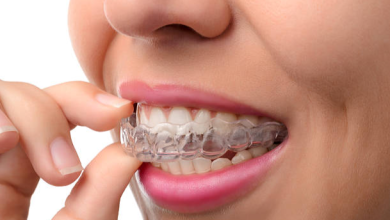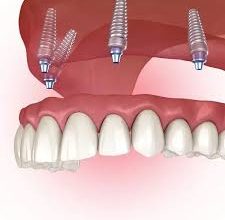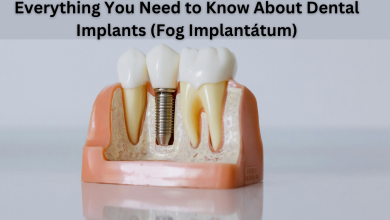What to Expect in a Clear Aligner Training Course

Clear aligner therapy is one of the fastest-growing areas of dentistry, offering a lucrative opportunity for dentists to expand their services and meet patient demand for discreet orthodontic treatment. However, if you’re new to clear aligners or have limited experience, it’s natural to feel unsure about where to start. A clear aligner training course is designed to bridge that gap, equipping you with the knowledge, skills, and confidence to offer this high-demand service in your practice.
In this article, we’ll explore what you can expect in a clear aligner training course, from understanding case selection and mastering treatment planning software to hands-on workshops and team training. Whether you’re new to orthodontics or looking to refine your approach, these courses provide a comprehensive foundation to ensure success in incorporating clear aligners into your practice.
1. A Focus on Case SelectionWhat to Expect in a Clear Aligner Training Course
One of the first topics covered in any clear aligner training course is case selection. Knowing which orthodontic cases are suitable for clear aligner therapy is critical for achieving predictable results.
In a typical course, you’ll learn to identify mild to moderate cases that are ideal for beginners. These cases may include patients with crowding, spacing, or minor bite issues. Equally important is recognizing red flags for complex cases, such as severe malocclusions or patients with poor compliance potential. By focusing on straightforward cases initially, dentists can build confidence and ensure successful outcomes.
Additionally, training programs often provide a checklist or framework to help participants systematically evaluate potential cases. This structured approach minimizes errors and increases your ability to select cases that align with your experience and expertise.
2. Comprehensive Team Training
Clear aligner therapy is a team-driven process, requiring coordination among dentists, dental assistants, and front-office staff. A high-quality training course emphasizes the importance of preparing your entire team to deliver a seamless patient experience.
Team training usually includes guidance on managing patient inquiries, scheduling consultations, and educating patients about the clear aligner process. For clinical staff, the course may cover how to assist in taking records, such as impressions, intraoral scans, and photographs. Front-office staff often receive instruction on communicating the benefits of clear aligners, overcoming patient objections, and managing the financial aspects of treatment.
When your team is well-trained and confident, the result is a streamlined workflow and a positive experience for patients, which in turn fosters trust and satisfaction.
3. Instruction on Orthodontic Principles
While clear aligners are considered a simpler alternative to traditional braces, they still require a solid understanding of orthodontic principles. Training courses often include an introduction to the biomechanics of clear aligners, such as how aligners move teeth, the types of attachments used, and how to achieve specific movements.
Participants may also learn about performing cephalometric analysis and temporomandibular joint (TMJ) examinations, both of which are important for diagnosing and planning orthodontic treatments. By understanding these foundational principles, dentists can provide more accurate and effective treatment plans for their patients.
4. Mastering Treatment Planning Software
One of the most unique aspects of clear aligner therapy is its reliance on digital treatment planning software. Courses typically include in-depth instruction on platforms like Invisalign’s ClinCheck or other proprietary systems.
You’ll learn how to upload patient records, such as digital impressions and photographs, into the software to create a virtual treatment plan. The course will also cover how to interpret and adjust the software’s simulations, ensuring the proposed treatment aligns with your patient’s needs and goals.
This training often includes step-by-step tutorials and real-world examples, helping participants become proficient with the tools they’ll use daily in practice. Mastering the software not only improves treatment outcomes but also boosts your confidence when presenting treatment plans to patients.
5. Hands-On Training
No clear aligner course would be complete without hands-on training. These workshops provide participants with practical experience in placing clear aligners, using attachments, and monitoring treatment progress.
You’ll practice on models or in some cases, even on patients, learning how to ensure aligners fit correctly and how to handle common issues such as aligner discomfort or poor compliance. Workshops may also cover techniques for bonding and removing attachments, trimming aligners, and making adjustments during follow-up visits.
This hands-on component is invaluable, as it bridges the gap between theoretical knowledge and real-world application. By the end of the course, you’ll feel more prepared to handle the clinical aspects of clear aligner therapy with confidence.
6. Emphasis on Record-Keeping
Proper documentation is a cornerstone of clear aligner therapy. Training courses emphasize the importance of maintaining detailed records, including intraoral photographs, radiographs, and written treatment plans.
Accurate record-keeping not only ensures continuity of care but also protects you in case of disputes or audits. Additionally, comprehensive records make it easier to track treatment progress and evaluate outcomes. By incorporating these best practices into your workflow, you’ll be well-prepared to handle the administrative aspects of clear aligner therapy.
7. Practice Growth Strategies
A clear aligner training course doesn’t just teach clinical skills—it also highlights how to leverage this service to grow your practice. Courses often include modules on marketing clear aligners, educating patients, and setting competitive fees.
You’ll learn how to position clear aligners as a premium offering in your practice, emphasizing their convenience, aesthetics, and effectiveness. Additionally, instructors may provide tips on creating patient education materials and optimizing your online presence to attract more clear aligner cases.
By implementing these strategies, many dentists see significant growth in both patient numbers and overall production. Some practices even report a 20% increase in revenue after incorporating clear aligners into their services.
Final Thoughts
A clear aligner training course is an essential investment for any dentist looking to expand their practice offerings. From case selection and software mastery to hands-on workshops and patient management, these courses provide the tools and knowledge needed to deliver exceptional care.
By the end of the dental training course, you’ll feel confident in your ability to treat mild to moderate orthodontic cases, manage patient expectations, and grow your practice. With expert mentorship and a comprehensive curriculum, a clear aligner training program ensures you’re well-equipped to succeed in this exciting and profitable field of dentistry.









